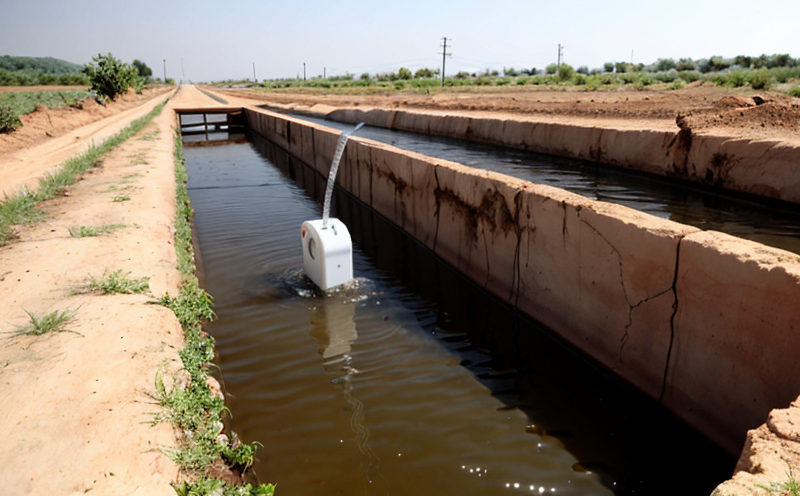ASTM D5907 Trace Elements in Water Testing
The ASTM D5907 standard is a critical tool used by laboratories to determine trace elements present in water samples from mining operations. This method provides a robust framework for ensuring that the quality of mine and groundwater meets regulatory standards set forth by various environmental bodies.
Trace elements, which include metals such as arsenic (As), cadmium (Cd), chromium (Cr), lead (Pb), mercury (Hg), nickel (Ni), and selenium (Se), can be present in mining water due to the leaching of minerals from ore deposits. The presence of these trace elements is not inherently harmful, but their concentrations must remain within safe limits as determined by international standards like ISO 17025.
ASTM D5907 outlines a procedure for collecting and analyzing water samples to identify the concentration levels of specific trace elements. The method typically involves dilution, filtration, digestion, and subsequent analysis using techniques such as Inductively Coupled Plasma Mass Spectrometry (ICP-MS). This approach ensures accurate detection even at very low concentrations.
The testing process begins with proper sampling methods to avoid contamination or bias in the results. Sample containers must be rinsed multiple times with deionized water, and the samples should be kept cool and dark during transport to prevent any chemical changes that could affect test outcomes.
Once collected, the sample is prepared according to ASTM D5907 guidelines. This might involve dilution factors based on preliminary analysis or filtration through specified pore size membranes to remove particulate matter. After preparation, the samples are digested in a suitable acid mixture and then analyzed for trace elements.
The results of this testing provide vital information about environmental conditions around mining sites. Regulatory agencies use these data points to assess compliance with local and international regulations regarding water quality. Additionally, mine operators can utilize ASTM D5907 test results to make informed decisions on how best to manage water resources sustainably.
It is essential for all stakeholders involved in the mining industry—whether they are responsible for environmental protection or ensuring compliance with legal requirements—to understand why accurate trace element testing matters. By adhering to rigorous standards like ASTM D5907, mines can help protect ecosystems and human health from potential risks associated with improperly managed mine water.
Understanding the importance of this service helps elucidate its broader significance within the mining sector. Compliance officers need reliable data on trace elements in order to ensure that their companies meet all necessary regulatory requirements. R&D engineers benefit from such testing as it informs product development and process optimization efforts aimed at reducing negative impacts associated with mine operations.
- Ensures adherence to international standards for water quality assessment
- Aids in identifying areas of concern related to environmental impact
- Supports strategic decision-making regarding resource management and waste disposal practices
- Facilitates compliance with legal mandates governing industrial effluent discharge
Why It Matters
The significance of ASTM D5907 trace element testing in mine water quality cannot be overstated. Accurate determination of trace elements not only ensures compliance with environmental regulations but also plays a crucial role in safeguarding public health and preserving natural resources.
Water contamination due to mining activities can lead to severe ecological damage if left unchecked. For instance, elevated levels of certain metals like arsenic or mercury are linked to various adverse effects on aquatic life forms. These pollutants can bioaccumulate up the food chain, affecting not only fish populations but also predators higher in the ecosystem.
Moreover, there are direct implications for human health when mine water enters local drinking supplies without proper treatment. Chronic exposure to high concentrations of lead or cadmium has been associated with neurological disorders and kidney diseases respectively. Therefore, monitoring trace elements through rigorous testing procedures such as those specified by ASTM D5907 becomes indispensable.
From an operational perspective, understanding the composition of mine water allows companies to implement targeted mitigation strategies aimed at minimizing harmful effects on surrounding environments. This proactive approach could involve installing additional treatment facilities or adjusting extraction methods depending upon identified deficiencies in current practices.
In summary, ASTM D5907 trace element testing serves multiple purposes simultaneously—protecting both the environment and people while fostering responsible business practices within the mining industry.
Applied Standards
The application of ASTM D5907 for trace elements in water testing is governed by several key standards:
- ASTM D5907-18: This standard specifies the procedure for determining trace elements in drinking water, which includes mine water. It provides detailed instructions on sample preparation, analytical techniques, and quality control measures.
- ISO 17025:2017: Laboratories performing ASTM D5907 tests must adhere to this international standard for the general requirements for the competence of testing and calibration laboratories. This ensures that results from different labs are consistent and reliable.
- EN ISO/IEC 17025:2017: Similar to ISO 17025, this European standard sets out the criteria for technical competence required of bodies offering testing services. Compliance helps build trust among clients regarding the accuracy and reliability of laboratory findings.





